mexico

 My nephew, Chris Killinger joined our family when he married my niece, Lacey (Stevens) Killinger a little under a year ago. Chris and Lacey are such a beautiful couple, and their wedding was just lovely. Since then, they have just been enjoying married life, and spending time with the kids, Brooklyn and Jaxon, who also joined our family with Chris married Lacey. They have all been a wonderful addition to our family.
My nephew, Chris Killinger joined our family when he married my niece, Lacey (Stevens) Killinger a little under a year ago. Chris and Lacey are such a beautiful couple, and their wedding was just lovely. Since then, they have just been enjoying married life, and spending time with the kids, Brooklyn and Jaxon, who also joined our family with Chris married Lacey. They have all been a wonderful addition to our family.
Chris and Lacey didn’t take a honeymoon right away, but later went to Mexico, and they had a super fun time. Chris and Lacey both have very demanding jobs, and they were ready for some down time. One of the highlights of the trip was when they went swimming in caves down there. The cave walls were beautiful, and it was a very different experience for them. The trip was one they won’t forget.
Chris is the office and purchasing manager for Atlas Aero Service, which is located at the Casper-Natrona  County International Airport. Chris’ job allows him to see all the planes that come and go from the airport. There is a huge variety of planes…military planes, cargo planes, commercial liners, and private jets (often with celebrities). Recently, however, the celebrity wasn’t the person on the plane…it was the plane. Chris knows planes, and he likes planes. He has a real interest in military planes. The plane that they got to work on recently was a plane that had been used in the movie “Tora, Tora, Tora” back in the 1970s. The movie was about the attack on Pearl Harbor in 1941, and while I know that Chris though it was very cool to work on that plane, I can’t help but think about how interested my dad, Al Spencer, Lacey’s grandpa would have loved to see that plane. He was the flight engineer and top turret gunner on a B-17 during World War II, so that plane would have been so cool for him to see. I’m glad Chris got that chance…such a cool experience, and one he will never forget for sure.
County International Airport. Chris’ job allows him to see all the planes that come and go from the airport. There is a huge variety of planes…military planes, cargo planes, commercial liners, and private jets (often with celebrities). Recently, however, the celebrity wasn’t the person on the plane…it was the plane. Chris knows planes, and he likes planes. He has a real interest in military planes. The plane that they got to work on recently was a plane that had been used in the movie “Tora, Tora, Tora” back in the 1970s. The movie was about the attack on Pearl Harbor in 1941, and while I know that Chris though it was very cool to work on that plane, I can’t help but think about how interested my dad, Al Spencer, Lacey’s grandpa would have loved to see that plane. He was the flight engineer and top turret gunner on a B-17 during World War II, so that plane would have been so cool for him to see. I’m glad Chris got that chance…such a cool experience, and one he will never forget for sure.
Recently, Chris and Lacey bought a new camper, and they have been having a great time with it. Chris has had 
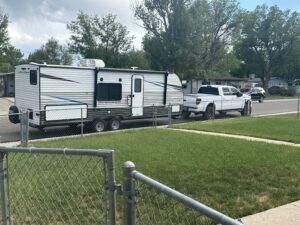 to learn how to pull it, which isn’t easy, but he is getting the hang of it. They have been having a great time going camping and they love their new camper. Lacey’s family takes yearly trips to Pathfinder Reservoir for a whole family week of fun, swimming, games, and lounging. Having a nice camper with room for their whole family is very important. The camper will get lots of use. Today is Chris’ birthday. Happy birthday Chris!! Have a great day!! We love you!!
to learn how to pull it, which isn’t easy, but he is getting the hang of it. They have been having a great time going camping and they love their new camper. Lacey’s family takes yearly trips to Pathfinder Reservoir for a whole family week of fun, swimming, games, and lounging. Having a nice camper with room for their whole family is very important. The camper will get lots of use. Today is Chris’ birthday. Happy birthday Chris!! Have a great day!! We love you!!

 When Elizabeth Jane Cochrane was born on May 5, 1864, there were things that women couldn’t do. It was a man’s world, after all. Not much had changed by the time she was eighteen years old. She was living in Pittsburgh when the local newspaper published an article titled “What Girls are Good For” and according to the article, the answer was having babies and keeping house. These days such an article would have brought immediate outrage, protests, and the author practically strung up. Due to the times, the author would have gotten away with it, but in this case, Elizabeth Cochrane saw it and was very displeased. She was displeased enough, in fact, that she wrote an anonymous rebuttal.
When Elizabeth Jane Cochrane was born on May 5, 1864, there were things that women couldn’t do. It was a man’s world, after all. Not much had changed by the time she was eighteen years old. She was living in Pittsburgh when the local newspaper published an article titled “What Girls are Good For” and according to the article, the answer was having babies and keeping house. These days such an article would have brought immediate outrage, protests, and the author practically strung up. Due to the times, the author would have gotten away with it, but in this case, Elizabeth Cochrane saw it and was very displeased. She was displeased enough, in fact, that she wrote an anonymous rebuttal.
Strangely, the paper’s editor was quite impressed with her rebuttal. He immediately ran an ad in his paper asking the writer to identify herself. Boldly, Elizabeth contacted him, and he hired her on the spot. I’m quite sure that she was not expecting that at all. Still, in this “man’s world” she could not really let anyone know that she was the writer…and maybe that wasn’t exactly a bad thing. Going up against the men is such an argument using her own name might bring some unwanted attention. After all, things were in the very early stages of women’s rights. At that time, most women were still housewives…or schoolteachers, librarians, seamstresses, and such, if they had to work outside the home. So, it was customary at that time for female reporters to use pen names. To top it off, she wasn’t even allowed to pick out her own pen name. The editor gave her one that he took from a Stephen Foster song…Nellie Bly, and it would actually make her famous…as Nellie Bly anyway.
Bly’s passion was investigative reporting, but once again, she found herself stumbling over the whole “man’s world” concept. While she was given work, the paper usually assigned her to more “feminine” subjects…things like theater and fashion. Still, they couldn’t keep her under their thumb very well. After writing a controversial series of articles exposing the working conditions of female factory workers, and after again being relegated to reporting on society functions and women’s hobbies…at age 21 Bly left for Mexico on a dangerous and unprecedented (for a woman) assignment to report of the conditions of the working-class people there. It didn’t take long for her reporting to get her in trouble with the local authorities. Wisely, Bly fled Mexico, but didn’t give up on her story. She later published her dispatches into a popular book.
By the time Bly was 23, she had established a reputation for being a daring and provocative reporter. This drew 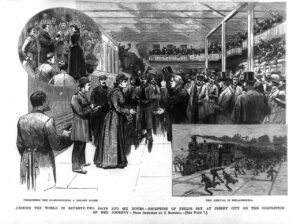 the attention of Joseph Pulitzer’s New York World, where she was hired to basically work under cover. It was the assignment that made her famous. In order to investigate the conditions inside New York’s “Women’s Lunatic Asylum,” Bly took on a fake identity (not really a new concept for someone using a pen name to write), checked into a women’s boarding house, and faked insanity. Bly was so convincing that she soon found herself committed to the asylum. I would personally find that a scary situation, but Bly was dedicated. The report she published of her ten days there was a sensation and led to important reforms in the treatment of the mentally ill.
the attention of Joseph Pulitzer’s New York World, where she was hired to basically work under cover. It was the assignment that made her famous. In order to investigate the conditions inside New York’s “Women’s Lunatic Asylum,” Bly took on a fake identity (not really a new concept for someone using a pen name to write), checked into a women’s boarding house, and faked insanity. Bly was so convincing that she soon found herself committed to the asylum. I would personally find that a scary situation, but Bly was dedicated. The report she published of her ten days there was a sensation and led to important reforms in the treatment of the mentally ill.
Nellie Bly was a woman to be remembered. When she was 24, she undertook her most sensational assignment yet: a solo trip around the world inspired by Jules Verne’s Around the World in 80 Days. Ready to go at the drop of a hat, Bly was given only two days’ notice, before she set out on November 14, 1889. She packed a travel bag with her toiletries and a change of underwear, tied her purse around her neck, and she was off. Pulitzer’s competitor, the New York Cosmopolitan, took that as a challenge and immediately sent out one of its reporters, Elizabeth Bisland, to race Bly, but traveling in the opposite direction. As Pulitzer had hoped, the stunt was a publicity bonanza. Readers gobbled up the regular reports on Bly’s journey and the paper sponsoring a contest for readers to guess the exact time of Bly’s return. The winning guess would be awarded an expense-paid trip to Europe.
Bly made her triumphant return just seventy-two days later, four and half days ahead of Bisland. She had successfully circumnavigated the globe, while traveling alone almost the entire time. It was a world record…the fastest any human had ever made the journey. Suddenly, Nellie Bly was an international celebrity. I still wonder if there was some regret that she was still using the pen name, or maybe it gave her a degree of anonymity, until people recognized her, that is.
After leading an almost insanely adventurous life, Bly decided to retire…so to speak. When she was 31 years old, Bly married industrialist Robert Seaman, a 73-year-old millionaire. With her marriage, she left behind her journalism career and her pen name and became Elizabeth Cochrane Seaman. She helped run the Seaman family business. While working as an industrialist, she patented two inventions, but she knew that business was not really her forte, and sadly, under her leadership the company went bankrupt. I’m sure that with all her life 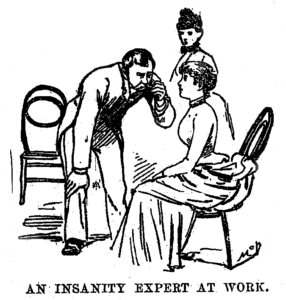
 successes, that was a devastating failure for her. With the outbreak of World War I broke out, she returned to journalism, becoming one of the first women reporters to work in an active war zone. I have no doubt that Nellie Bly (Elizabeth Cochrane Seaman) could have done so many more remarkable things in her life, but sadly, her remarkable life ended on January 27, 1922, when she died of pneumonia in New York at age 57.
successes, that was a devastating failure for her. With the outbreak of World War I broke out, she returned to journalism, becoming one of the first women reporters to work in an active war zone. I have no doubt that Nellie Bly (Elizabeth Cochrane Seaman) could have done so many more remarkable things in her life, but sadly, her remarkable life ended on January 27, 1922, when she died of pneumonia in New York at age 57.
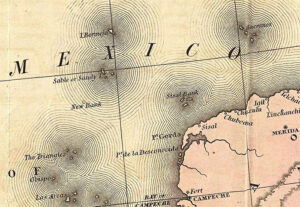
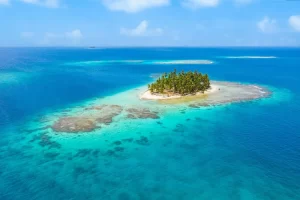 For centuries there the maps of Mexico showed an island called Bermeja located off the north coast of the Yucatán Peninsula. It wasn’t a big island, but it was there. Then, suddenly, it wasn’t there. Now…islands don’t just disappear, so was it there, or wasn’t it, and if it was, where did it go? These days, it’s known as a phantom island. What’s interesting about this island is that a search for it found nothing that could have been called an island. While it is strange that an island was on a map and then wasn’t, I began to wonder why it mattered. There was a reason…oil rights. When a question arose concerning oil rights in the Gulf of Mexico, where the island was concerned, research started when someone pointed out that the island has no real boundaries, and therefore, no rights to oil in the Gulf of Mexico. So, authorities started looking for this piece of land, but they found only water. I’m sure that settled the question of oil rights, but it doesn’t explain whether or not the island ever existed, or if it was just an error on the old maps.
For centuries there the maps of Mexico showed an island called Bermeja located off the north coast of the Yucatán Peninsula. It wasn’t a big island, but it was there. Then, suddenly, it wasn’t there. Now…islands don’t just disappear, so was it there, or wasn’t it, and if it was, where did it go? These days, it’s known as a phantom island. What’s interesting about this island is that a search for it found nothing that could have been called an island. While it is strange that an island was on a map and then wasn’t, I began to wonder why it mattered. There was a reason…oil rights. When a question arose concerning oil rights in the Gulf of Mexico, where the island was concerned, research started when someone pointed out that the island has no real boundaries, and therefore, no rights to oil in the Gulf of Mexico. So, authorities started looking for this piece of land, but they found only water. I’m sure that settled the question of oil rights, but it doesn’t explain whether or not the island ever existed, or if it was just an error on the old maps.
Of course, no pictures of the island are known to exist. All we know is that one century, it’s sitting pretty at 22°33′ N, 91°22 E in the Gulf of Mexico and the next, it’s vanished, confounding maritime investigations and aerial surveys alike. While it may seem to many people as no big deal, the Mexican people want to know where it went. It wasn’t inhabited, so you might wonder why it is so important to know if it did and if so, where it went. The thing is that while it wouldn’t be like the island of Jamaica went missing, it still changes what the Mexican people thought they knew about their world. For some people, that is akin to having your computer have a virus, and you can’t seem to get rid of it. Ok, maybe that is extreme, but in a techy world, that would be a good comparison.
Bermeja was a common fixture on maps drawn by Spanish explorers back in the 16th and 17th centuries. Strangely, its location sometimes varied slightly and sometimes its name appeared as Vermeja, but its existence was not in question at that time. In the 18th century, however, the island’s cartographic presence started faltering, before it eventually dropped off the horizon altogether. Its last mapped appearance dates back to the 1921 edition of the Geographic Atlas of the Mexican Republic. So, what happened to it? If you ask me it eroded away, but that is just my opinion. There are many theories regarding Bermeja’s mysterious fate. Some say that “global warming” caused the island to succumb to rising sea levels. Some wonder if an underwater earthquake caused it to denigrate. Then, there is the conspiracy theory that maybe, the CIA blow it up. They theorize that with a view to expanding US sovereignty in the oil-rich Gulf the island had to go. Others say that while that might be far-fetched, perhaps it’s not entirely impossible. I suppose that given its small size it might not have taken much to blow it up.
The Mexican and United States governments negotiated a treaty to divide Hoyos de Dona in 1997. Hoyos de Dona is a stretch of international waters taking in the area where Bermeja was once believed to be located. Now, the island mattered, so the Mexican government sent an expedition out to find it. The reason…if Bermeja did exist, it would significantly extend Mexico’s maritime limits and, more importantly, its right to the oil deposits within these limits. They found nothing, and the treaty was signed. Still, there was the authorized period of delay on oil exploration and exploitation in Hoyos de Dona, giving them a little time. That period of delay is to expire in 2010, Mexico started the hunt again. The implications for the country’s economy were just too appealing to ignore.
The “hunt” consisted of three official investigations that took place in 2009. All three used the most best technologies available at that time. They left “no wave unturned and no depth unplunged.” Nevertheless, Bermeja, nor any sign that it existed, could be found. There are those who think that it’s simply time to admit that the island never existed, and maybe it was invented by early explorers to mislead their rivals. Julio Zamora, president of the Mexican Society of Geography believes so, and says, “Countries making maps in the 16th and 17th centuries published them with inaccuracies to prevent their enemies from using them.” If ships saw an island on the map, they would avoid the area, thus allowing the map-makers free run of the area. I’m not sure why that would be important, but I suppose it’s possible, but Irasema Alcántara, from the Geography Institute at the Universidad Nacional Autónoma de México (UNAM), disagrees, saying “We’ve encountered 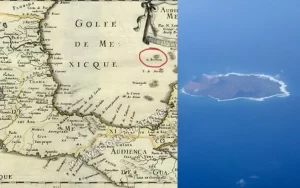
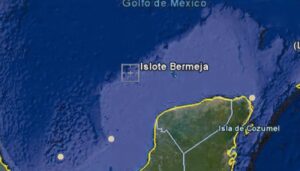 documents containing very precise descriptions of Bermeja’s existence. On this basis we firmly believe that the island did exist, but in another location.” Well, now, that puts a whole new spin on an otherwise totally confusing situation. Maybe, we should just leave well enough alone and say, “Now you see it, now you don’t.” Highly unlikely.
documents containing very precise descriptions of Bermeja’s existence. On this basis we firmly believe that the island did exist, but in another location.” Well, now, that puts a whole new spin on an otherwise totally confusing situation. Maybe, we should just leave well enough alone and say, “Now you see it, now you don’t.” Highly unlikely.
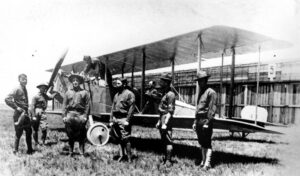 Imagine a time when there was no air force, or for that matter, airplanes. Of course, for those of us living today, that would be very hard to imagine…in fact, maybe impossible. Nevertheless, before the Wright brothers made flight possible, there was not only no planes, but no air force. Then, in 1914, things were about to change forever.
Imagine a time when there was no air force, or for that matter, airplanes. Of course, for those of us living today, that would be very hard to imagine…in fact, maybe impossible. Nevertheless, before the Wright brothers made flight possible, there was not only no planes, but no air force. Then, in 1914, things were about to change forever.
The First Aero Squadron was formed in 1914. It was organized after the start of World War I, but it was first used because of the Mexican revolutionary, Pancho Villa, who was initially a bandit, but later became a general in the Mexican Revolution. He was a key figure in the revolutionary violence that forced out President Porfirio Díaz and brought Francisco Madero to power in 1911. Pancho Villa was an excellent guerrilla leader who fought against the regimes of both of those men. After 1914, he engaged in civil war and banditry. He became notorious in the United States for his attack on Columbus, New Mexico, in 1916, and something had to be done
On March 9, 1916, Villa, who opposed American support for Mexican President Venustiano Carranza, led a band of several hundred guerrillas across the border on a raid of the town of Columbus, New Mexico. Seventeen Americans were killed in the battle. On March 15, President Woodrow Wilson ordered, US Brigadier General John J Pershing to launch a punitive expedition into Mexico to capture Villa. Four days later, the First Aero Squadron was sent into Mexico to scout and relay messages for General Pershing. On March 19, 1914, Eight Curtiss “Jenny” planes of the First Aero Squadron took off from Columbus, New Mexico, in the first combat air mission in United States history. The squadron was on a support mission for the 7,000 US troops who invaded Mexico to capture Villa.

Despite encountering numerous mechanical and navigational problems, the American pilots flew hundreds of missions for Pershing during which they gained important experience that would later be used by fliers over the battlefields of Europe. Unfortunately, during the 11-month mission, US forces failed to capture the elusive revolutionary, and Mexican resentment over US intrusion into their territory led to a diplomatic crisis. In late January 1917, with President Wilson under pressure from the Mexican government and more concerned with the war overseas than with bringing Villa to justice, the Americans were ordered home. The missions were over.

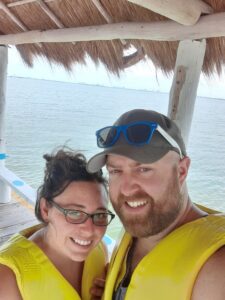 Garrett’s life over the past few years has become more wonderful than he could ever have imagined. In 2016, he married the love of his life, Kayla and they were blessed with a beautiful little daughter named Elliott in 2018. Garrett has always loved children, and now with one of his own, he is so happy. Garrett and Elliott love to do things together, like mowing the lawn, hanging out by the pool, and going down the slide in the bouncy castle pool they rented for her birthday party.
Garrett’s life over the past few years has become more wonderful than he could ever have imagined. In 2016, he married the love of his life, Kayla and they were blessed with a beautiful little daughter named Elliott in 2018. Garrett has always loved children, and now with one of his own, he is so happy. Garrett and Elliott love to do things together, like mowing the lawn, hanging out by the pool, and going down the slide in the bouncy castle pool they rented for her birthday party.
This year, the most exciting thing that happened is that Garrett and Kayla took a trip to Cancun, Mexico to celebrate their birthdays, both of which are in June. They had a wonderful trip. They went golfing and rented a speed boat which Garrett thought was the greatest thing!! They relaxed and enjoyed the sun and the warm waters of the Caribbean,  and the many activities at the resort. One of the coolest things was when they found an elk picture at the resort. I don’t know of any elk in Mexico, but I suppose I could be wrong. As a hunter, Garrett found the elk picture a very cool thing. On this trip, they left Elliott first with her grandma, Alena Stevens and then the second half of the trip, her grandma Lynette Smiley took over. Elliott had a wonderful time too. Grandma time is always fun for kids…and it was a great way for Garrett and Kayla to celebrate their birthdays too.
and the many activities at the resort. One of the coolest things was when they found an elk picture at the resort. I don’t know of any elk in Mexico, but I suppose I could be wrong. As a hunter, Garrett found the elk picture a very cool thing. On this trip, they left Elliott first with her grandma, Alena Stevens and then the second half of the trip, her grandma Lynette Smiley took over. Elliott had a wonderful time too. Grandma time is always fun for kids…and it was a great way for Garrett and Kayla to celebrate their birthdays too.
Garrett usually has weekends off, unless they are really busy at EMIT Technologies, where he has worked since shortly after moving to Sheridan. He wants to play lots of golf and do lots of camping this summer. Garrett loves fishing too, so I’m sure some of their camping will be near rivers or lakes so fishing can be part of the fun. I’m 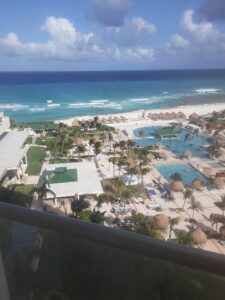
 quite sure that before Elliott will become a great fisherwoman…following in her daddy’s footsteps. Elliott likes doing most things in her daddy’s footsteps, even though she is no tomboy. She is a princess, but her daddy’s stuff tops all duties of a princess.
quite sure that before Elliott will become a great fisherwoman…following in her daddy’s footsteps. Elliott likes doing most things in her daddy’s footsteps, even though she is no tomboy. She is a princess, but her daddy’s stuff tops all duties of a princess.
Yes, Garrett’s life took a dramatically wonderful turn back in 2016, because when he married Kayla, his future began. A future that has continued get brighter and brighter. I know that because their love for one another is very strong, they will continue to have wonderful things happen to them, and their life will become more and more wonderful every day. Today is Garrett’s birthday. Happy birthday Garrett!! Have a great day!! We love you!!

 Following her graduation from the University of Wyoming, my niece, Kayla Stevens took a job at the Wyoming Mental Health Clinic in Sheridan, Wyoming. The job was a good starting point for Kayla. She started out in the Substance Abuse Team, but was later transferred to the Child and Family Team. While her jobs at the Wyoming Mental Health Clinic were fulfilling, Kayla truly found her home when she switched jobs, going with the Veterans Administration in Sheridan. The work with the Veterans Administration has truly been fulfilling, and recently even more so. Kayla just received a promotion with the Veterans Administration, and a nice raise, but the best bonus of all is that her new job will include working from home. Truly, what more could a mother of a young daughter ask than to stay home with her daughter while also continuing in her life’s work and at a great rate of pay. Plus, she and my nephew, Garrett won’t have to pay for daycare for their daughter, Elliott anymore. It is so hard on a mother to have to put their babies in the care of someone else to raise, even if you know and love the person caring for them. There is no substitute for a parent when raising a child. Now, Kayla can have the best of both worlds. Truly, it is a job sent from Heaven.
Following her graduation from the University of Wyoming, my niece, Kayla Stevens took a job at the Wyoming Mental Health Clinic in Sheridan, Wyoming. The job was a good starting point for Kayla. She started out in the Substance Abuse Team, but was later transferred to the Child and Family Team. While her jobs at the Wyoming Mental Health Clinic were fulfilling, Kayla truly found her home when she switched jobs, going with the Veterans Administration in Sheridan. The work with the Veterans Administration has truly been fulfilling, and recently even more so. Kayla just received a promotion with the Veterans Administration, and a nice raise, but the best bonus of all is that her new job will include working from home. Truly, what more could a mother of a young daughter ask than to stay home with her daughter while also continuing in her life’s work and at a great rate of pay. Plus, she and my nephew, Garrett won’t have to pay for daycare for their daughter, Elliott anymore. It is so hard on a mother to have to put their babies in the care of someone else to raise, even if you know and love the person caring for them. There is no substitute for a parent when raising a child. Now, Kayla can have the best of both worlds. Truly, it is a job sent from Heaven.
Recently Kayla and Garrett had a chance to have a little getaway to Cancun, Mexico, and their daughter, Elliott is getting some one on on time with her grandmas, Alena Stevens, who had Elliott the first half of the vacation, and Lynette Smiley, who has Elliott for the last half of the vacation. I am a firm believer of occasional parent trips, without the kids. These trips are like marriage renewal trips, and parents need that time to reconnect with their spouse in the ways they did before marriage…especially that whole dating thing. I am a firm believer of life long dating of your spouse. The couple who never stops dating their spouse will always stay in love. Finding ways to continually show your spouse how much they mean to you is the best way of expressing your love. The Cancun trip has been great for Kayla and Garrett, who have been married almost five years now.


Kayla is such a sweet person, and she has been a wonderful addition to our family. She loves kids and all the kids love her. She and Garrett make a perfect couple and great parents to Elliott. They are teaching her so much, including to have a great sense of humor. I am so glad that Kayla will be able to stay home with Elliott now, because Elliott will benefit so much. The future looks really bright for Kayla, and a work from home job will fit right in. Today is Kayla’s birthday. Happy birthday Kayla!! Have a great day!! We love you!!
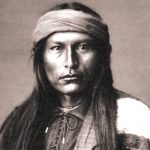 We always think of the wars between the Indians and the White Man being disputes between the two parties over land, and often they were, but sometimes it is something else altogether, and sometimes it is simply ad devastatingly, a mistake. As with many Indians of the early years of our country, not much was known about Chief Cochise’s early life, but he was hailed as one of the great leaders of the Apache Indians. He took them into many battles between his people and the people of southern Arizona and northern Mexico, who he felt were pushing his people off of their lands. Like many other Chiricahua Apache, Cochise resented the encroachment of Mexican and American settlers on their traditional lands. They felt like they had been pushed back and they were tired of it. Cochise began to lead many raids on the settlers living on both sides of the border. The raids caused Mexicans and Americans alike start calling for military aid.
We always think of the wars between the Indians and the White Man being disputes between the two parties over land, and often they were, but sometimes it is something else altogether, and sometimes it is simply ad devastatingly, a mistake. As with many Indians of the early years of our country, not much was known about Chief Cochise’s early life, but he was hailed as one of the great leaders of the Apache Indians. He took them into many battles between his people and the people of southern Arizona and northern Mexico, who he felt were pushing his people off of their lands. Like many other Chiricahua Apache, Cochise resented the encroachment of Mexican and American settlers on their traditional lands. They felt like they had been pushed back and they were tired of it. Cochise began to lead many raids on the settlers living on both sides of the border. The raids caused Mexicans and Americans alike start calling for military aid.
While those raids resulted in deaths and retribution, there was a war that was started for a completely different reason…a misunderstanding. In October 1860, a band of Apache attacked the ranch of John Ward, who was an Irish-American. The Apache kidnapped Ward’s adopted son, Felix Telles. Ward was not home at the time, and while he had no confirmation, he was convinced that Cochise was the leader of the raid. Ward demanded that the US Army go out to rescue his son and bring Cochise to justice. Of course, the Army mobilized immediately, under the command of Lieutenant George Bascom.
Cochise had no idea that they were in any danger, when they received Bascom’s invitation to join him for a night of entertainment at a nearby stage station. I suppose that is was a peaceful way to arrest the warriors, 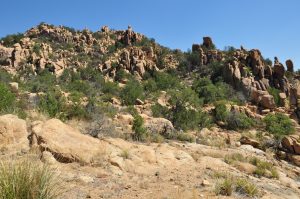 but it seems so unscrupulous now. Still, I guess no one died that night. When the Apache arrived, Bascom’s soldiers arrested them. Cochise told Bascom that he was innocent of the kidnapping of Felix Telles, but the lieutenant refused to believe him. Bascom decided that Cochise would be kept in confinement until the boy was returned, thinking that his warriors would relent and give up the boy to get their chief back, but Cochise had other ideas. Cochise determined that he would not tolerate being imprisoned unjustly. He used his knife to cut his way out of the tent where he was being held and escaped. They did not recapture Cochise, and the boy was not returned.
but it seems so unscrupulous now. Still, I guess no one died that night. When the Apache arrived, Bascom’s soldiers arrested them. Cochise told Bascom that he was innocent of the kidnapping of Felix Telles, but the lieutenant refused to believe him. Bascom decided that Cochise would be kept in confinement until the boy was returned, thinking that his warriors would relent and give up the boy to get their chief back, but Cochise had other ideas. Cochise determined that he would not tolerate being imprisoned unjustly. He used his knife to cut his way out of the tent where he was being held and escaped. They did not recapture Cochise, and the boy was not returned.
The raids continued and increased in severity over the next decade. Cochise and his warriors also fought occasional skirmishes with soldiers. The unrest started a panic among the settlers, and they began to abandon their homes. The Apache raids took hundreds of lives and caused hundreds of thousands of dollars in property damages. As time went on the US government was desperate for peace by 1872, so finally the government offered Cochise and his people a huge reservation in the southeastern corner of Arizona Territory, in exchange for the cessation of the hostilities. Cochise agreed, saying, “The white man and the Indian are to drink of the same water, eat of the same bread, and be at peace.” Cochise knew that he needed to help his people transition into a day of peace. Unfortunately, Cochise did not get to enjoy his hard-won peace for very long. He became seriously ill in 1874. It is believed that he quite possibly had stomach cancer. Cochise died on June 8, 1874. That night his warriors painted his body yellow, black, and vermilion, and took him deep into the Dragoon Mountains. They lowered his body and weapons into a rocky crevice, the exact location of which  remains unknown. I don’t know if that is a traditional burial for a chief, or if Cochise was considered special, but to this day that section of the Dragoon Mountains is known as Cochise’s Stronghold.
remains unknown. I don’t know if that is a traditional burial for a chief, or if Cochise was considered special, but to this day that section of the Dragoon Mountains is known as Cochise’s Stronghold.
The war had lasted from 1860 to 1872, and was truly all about the kidnapping of Felix Telles, but about a decade after Cochise died, Felix Telles actually resurfaced. He was alike and well, and was actually an Apache-speaking scout for the US Army. How could they have not known who he was? Nevertheless, they didn’t. He reported that a group of Western Apache, not Cochise, had kidnapped him. That was such a devastating revelation. To know that so many people lost their lives because of a misunderstanding.
 Most of us learned about Davy Crockett in school, but I don’t think that most of us really knew very much about him. Davy Crockett was an incredibly “macho” man. He was also an incredibly loyal man. During the War of 1812, the Creek Indian tribe split into factions. I suppose they thought to divide and conquer. One group, the Red Sticks, attacked Fort Mims on August 30, 1830, taking the lives of militiamen, civilians, and Creek allies. The Fort Mims massacre brought national outrage. Many men began to volunteer to fight the Creek Indians. Davy Crockett was among them. Crockett recalled, that he “had none of the dread of dying that I expected to feel,” but his wife, Mary “Polly” Finley did not share his optimism. She was terrified of losing her husband, and begged him not to go. Crockett felt obligated, and he did go. While he was off fighting, Polly became ill and passed away shortly after his return home. Crockett had 3 children with Polly…John Wesley, William, and Margaret.
Most of us learned about Davy Crockett in school, but I don’t think that most of us really knew very much about him. Davy Crockett was an incredibly “macho” man. He was also an incredibly loyal man. During the War of 1812, the Creek Indian tribe split into factions. I suppose they thought to divide and conquer. One group, the Red Sticks, attacked Fort Mims on August 30, 1830, taking the lives of militiamen, civilians, and Creek allies. The Fort Mims massacre brought national outrage. Many men began to volunteer to fight the Creek Indians. Davy Crockett was among them. Crockett recalled, that he “had none of the dread of dying that I expected to feel,” but his wife, Mary “Polly” Finley did not share his optimism. She was terrified of losing her husband, and begged him not to go. Crockett felt obligated, and he did go. While he was off fighting, Polly became ill and passed away shortly after his return home. Crockett had 3 children with Polly…John Wesley, William, and Margaret.
Losing Polly was very hard, but as often happened in those days, marriage after the loss of a wife came out of necessity. Davy needed someone to care for his children. He met a widow woman, Elizabeth Patton, who had children, and who lived nearby. Circumstances being what they were, Crockett began to visit the woman and after discovering his “company wasn’t at all disagreeable to her,” he decided he “could treat her children with so much friendship as to make her a good stepmother.” They married a short time later.
Crockett decided to move his family to Texas, but Elizabeth, while fine with that, asked that he go first to prepare things, and make sure he liked it there before they moved the family. It was probably a good thing in retrospect. Crockett arrived in East Texas in January 1836. He traveled through Nacogdoches and San Augustine before arriving in San Antonio. By the time he got there, the Texas Revolution was in full swing, and included thousands of Mexican troops led by Antonio López de Santa Anna. Their goal was to stop the Texas  independence movement. The battle was fierce, and in the end, approximately 200 Texas militiamen were hunkered in at the Alamo when Santa Anna and his men arrived in February 1836. Crockett and the other men inside gathered supplies and did their best to prepare for the coming siege. Crockett was said to have helped with moral by making jokes and telling stories. The siege of the Alamo lasted 13 days, with the severely outnumbered Texans holding out until the walls of the compound were breached on March 6. As we all know, the men and women inside were all killed. Crockett was also killed, and that left Elizabeth widowed for a second time, but with more children this time. Still, by not taking the family, their lives were spared. Davy Crockett died at the age of 50 years.
independence movement. The battle was fierce, and in the end, approximately 200 Texas militiamen were hunkered in at the Alamo when Santa Anna and his men arrived in February 1836. Crockett and the other men inside gathered supplies and did their best to prepare for the coming siege. Crockett was said to have helped with moral by making jokes and telling stories. The siege of the Alamo lasted 13 days, with the severely outnumbered Texans holding out until the walls of the compound were breached on March 6. As we all know, the men and women inside were all killed. Crockett was also killed, and that left Elizabeth widowed for a second time, but with more children this time. Still, by not taking the family, their lives were spared. Davy Crockett died at the age of 50 years.

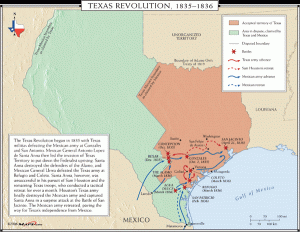 Since the 17th century, Texas, or Tejas as the Mexicans called it, had technically been a part of the Spanish empire. However, there were only about 3,000 Spanish-Mexican settlers in Texas, even as late as the 1820s, and Mexico City’s hold on the territory was very weak. Tensions were growing between Mexico and Texas, and on October 2, 1835, the area erupted into violence when Mexican soldiers attempted to disarm the people of Gonzales. People just don’t take kindly to having their guns taken away in any era, I guess. The citizens of Texas chose a war for independence of allowing the government to take their guns.
Since the 17th century, Texas, or Tejas as the Mexicans called it, had technically been a part of the Spanish empire. However, there were only about 3,000 Spanish-Mexican settlers in Texas, even as late as the 1820s, and Mexico City’s hold on the territory was very weak. Tensions were growing between Mexico and Texas, and on October 2, 1835, the area erupted into violence when Mexican soldiers attempted to disarm the people of Gonzales. People just don’t take kindly to having their guns taken away in any era, I guess. The citizens of Texas chose a war for independence of allowing the government to take their guns.
Mexico had just won it’s own independence from Spain in 1821. At this point, Mexico welcomed large numbers of Anglo-American immigrants into Texas. They were hoping that these citizens would become loyal Mexican citizens, thereby keeping the territory from falling into the hands of the United States. During the next decade men like Stephen Austin brought more than 25,000 people to Texas, most of them Americans. But while these emigrants legally became Mexican citizens, they continued to speak English, formed their own schools, and had closer trading ties to the United States than to Mexico.
The situation exacerbated in 1835, the president of Mexico, Antonio Lopez de Santa Anna, overthrew the constitution and appointed himself dictator. Recognizing that the “American” Texans were likely to use his rise to power as an excuse to secede, Santa Anna ordered the Mexican military to begin disarming the Texans whenever possible. He underestimated the people. His attempt to disarm proved more difficult than he could have ever imagined, and the situation exploded on that October day in 1835.
That day, the Mexican soldiers were attempting to take a small cannon from the village of Gonzales. To their surprise, they encountered much stiffer resistance than they ever thought possible from a hastily assembled militia of Texans. After a rather brief fight, the Mexicans retreated and the Texans kept their cannon. The determined Texans would continue to battle Santa Ana and his army for another year and a half before winning their independence and establishing the Republic of Texas. This truly goes to show that a nation, whose citizens are armed, is much more likely to be able to fend off their enemies…even if that enemy is a tyrannous government; than an nation of disarmed citizens. Yes, the ensuing war lasted for another year and a half, but 
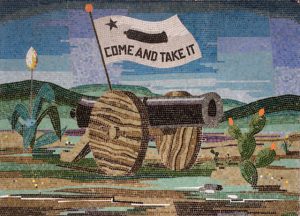 the people won their independence in the end. They later went on to become a part of the United States, and they continue to carry their guns to this day. The people of Texas are just as adamant about their right to bear arms today as they were in 1835, as are a good number of their fellow Americans. It’s a fight that would not likely be won by the government today either. The American people won’t accept the loss of guns without a fight of epic proportions!!
the people won their independence in the end. They later went on to become a part of the United States, and they continue to carry their guns to this day. The people of Texas are just as adamant about their right to bear arms today as they were in 1835, as are a good number of their fellow Americans. It’s a fight that would not likely be won by the government today either. The American people won’t accept the loss of guns without a fight of epic proportions!!
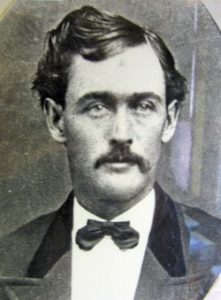 Many men helped to tame the wild west, but unfortunately things didn’t always go exactly as the lawmen planned. Billy Daniels was a pretty typical lawman, but like the thousands of courageous young men and women who helped tame the Wild West, whose names and stories have since been largely forgotten, Billy was not a well remembered lawman. For every Wild Bill Hickok or Wyatt Earp, who have been immortalized by the dramatic exaggerations of dime novelists and journalists, the West had dozens of men like Billy Daniels, who quietly did their duty with little fanfare, celebration, or thanks.
Many men helped to tame the wild west, but unfortunately things didn’t always go exactly as the lawmen planned. Billy Daniels was a pretty typical lawman, but like the thousands of courageous young men and women who helped tame the Wild West, whose names and stories have since been largely forgotten, Billy was not a well remembered lawman. For every Wild Bill Hickok or Wyatt Earp, who have been immortalized by the dramatic exaggerations of dime novelists and journalists, the West had dozens of men like Billy Daniels, who quietly did their duty with little fanfare, celebration, or thanks.
On December 8, 1883, five desperadoes led by Daniel “Big Dan” Dowd, rode into the booming mining town of Bisbee, Arizona. Dowd had heard that the $7,000 payroll of the Copper Queen Mine would be in the vault at the Bisbee General Store. He had planned to surprise the store owners, and make off with the payroll, but things didn’t go exactly as planned. When the outlaws barged into the store with their guns drawn, demanding the payroll, they discovered, to Dowd’s disappointment, that they were too early. The payroll hadn’t arrived yet. The outlaws quickly gathered up what money there was, somewhere between $900 to $3,000, and took valuable rings and watches from the customers who just happened to be in the store. After the robbery, for reasons that are unclear…but possibly, anger…the robbery turned into a slaughter. When the five desperadoes rode away, they left behind four dead or dying people, including Deputy Sheriff Tom Smith and a Bisbee woman named Anna Roberts.
The people of Arizona were stunned. The people had cooperated with the outlaws. There was no reason to kill 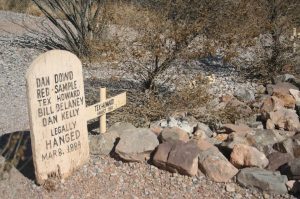 those people. The killings were a completely senseless show of brutality. The newspapers called it the “Bisbee Massacre.” The sheriff quickly organized citizen posses to track down the killers, placing Deputy Sheriff Billy Daniels at the head of one. Unfortunately, the posses soon ran out of clues and the trail grew cold. Most of the citizen members gave up, but not Daniels. He stubbornly continued the pursuit alone. Daniels eventually learned the identities of the five men from area ranchers and began to track them down one by one.
those people. The killings were a completely senseless show of brutality. The newspapers called it the “Bisbee Massacre.” The sheriff quickly organized citizen posses to track down the killers, placing Deputy Sheriff Billy Daniels at the head of one. Unfortunately, the posses soon ran out of clues and the trail grew cold. Most of the citizen members gave up, but not Daniels. He stubbornly continued the pursuit alone. Daniels eventually learned the identities of the five men from area ranchers and began to track them down one by one.
Daniels found one of the killers in Deming, New Mexico, and arrested him. He then learned from a Mexican informant that the gang leader, Big Dan Dowd, had fled south of the border to a hideout at Sabinal, Chihuahua. Daniels went under cover, disguising himself as an ore buyer. He tricked Dowd into a meeting and took him prisoner. A few weeks later, Daniels returned to Mexico and arrested another of the outlaws. Other law officers apprehended the remaining two members of the gang. A jury in Tombstone, Arizona, quickly convicted all five men. They were sentenced to be hanged simultaneously. As the noose was fitted around his neck on the five-man gallows, Big Dan reportedly muttered, “This is a regular killing machine.”
Daniels ran for sheriff the net year, but oddly lost. I would think that a hometown hero would be a shoo-in. After all he had done for the town, it would seem that being the sheriff was a thankless job. He found a new  position as an inspector of customs. The job required him to travel all around the vast and often isolated Arizona countryside, where various bands of hostile Apache Indians were a serious danger. Early on the morning of June 10, 1885, Daniels and two companions were riding up a narrow canyon trail in the Mule Mountains east of Bisbee. Daniels, who was in the lead, rode into an Apache ambush. The first bullets killed his horse, and the animal collapsed, pinning Daniels to the ground. Trapped, Daniels used his rifle to defend himself as best he could, but the Apache quickly overwhelmed him and cut his throat. A mere two years after Arizona Deputy Sheriff William Daniels apprehended three of the five outlaws responsible for the Bisbee Massacre, it was an Apache Indians ambush that would end his life. His two companions escaped with their lives and returned the next day with a posse. They found Daniels’ badly mutilated corpse but were unable to track the Apache Indians who murdered him. I guess they lacked Daniels’ under cover or investigative skills.
position as an inspector of customs. The job required him to travel all around the vast and often isolated Arizona countryside, where various bands of hostile Apache Indians were a serious danger. Early on the morning of June 10, 1885, Daniels and two companions were riding up a narrow canyon trail in the Mule Mountains east of Bisbee. Daniels, who was in the lead, rode into an Apache ambush. The first bullets killed his horse, and the animal collapsed, pinning Daniels to the ground. Trapped, Daniels used his rifle to defend himself as best he could, but the Apache quickly overwhelmed him and cut his throat. A mere two years after Arizona Deputy Sheriff William Daniels apprehended three of the five outlaws responsible for the Bisbee Massacre, it was an Apache Indians ambush that would end his life. His two companions escaped with their lives and returned the next day with a posse. They found Daniels’ badly mutilated corpse but were unable to track the Apache Indians who murdered him. I guess they lacked Daniels’ under cover or investigative skills.

